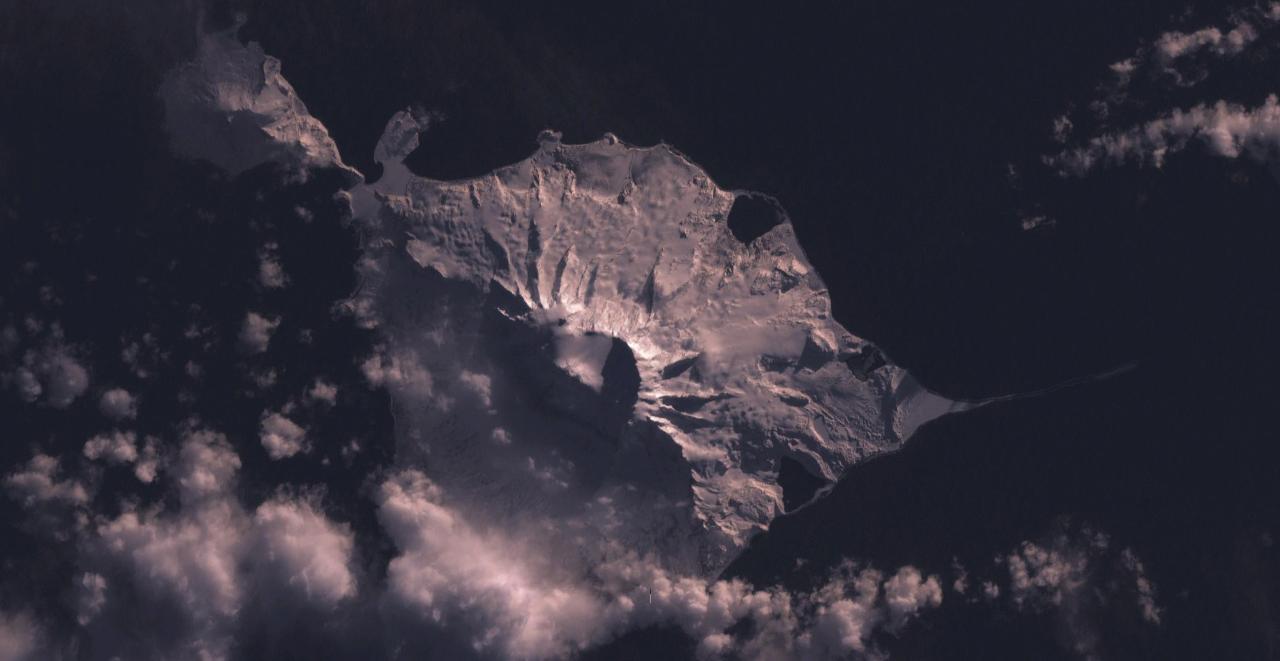
Heard Island & the McDonald Islands: Day-Length Cycles, Night-Sky Treasures & Scientific Frontiers
Sitting at 53° S in the furious Southern Ocean, Australia’s uninhabited Heard Island and McDonald Islands (HIMI) enjoy 16.5-hour summer days in December and endure 7.5-hour winter days in June. Those dark winter nights, combined with Bortle 1–2 skies, reveal the Milky Way, Magellanic Clouds, and frequent Aurora Australis—when clouds break. Fierce weather, an active 2 745 m volcano, retreating glaciers, and enormous wildlife colonies make the archipelago a natural observatory for volcanology, climate, space-weather and biodiversity research.
1 · Annual Day-Length Cycle
Near-polar latitude causes dramatic swings in daylight. The table shows civil-sunrise/sunset for 2025—adjust to future years with the same pattern in your favourite ephemeris app.
| Date | Sunrise | Sunset | Total Daylight |
|---|---|---|---|
| 21 June (Winter Solstice) | 08 : 20 | 15 : 53 | 7 h 33 m |
| 22 September (Equinox) | 05 : 47 | 17 : 53 | ≈ 12 h 06 m |
| 21 December (Summer Solstice) | 03 : 37 | 20 : 14 | 16 h 37 m |
Civil and nautical twilight add roughly 90 minutes of useful light either side of the solar disk below 6°.
2 · Night-Sky & Aurora Prospects
2.1 Light-Pollution Status
The islands lie in a Class 1–2 zone on global light-pollution maps—no permanent artificial light for hundreds of kilometres—yielding pristine skies for astrophotography and naked-eye observing.
2.2 Weather Constraints
Atlas Cove records ≈ 1.4 h of sunshine per day, precipitation on three-quarters of days, and average wind speeds around 25 knots. Flexibility is critical for catching clear windows.
2.3 Celestial Highlights
- Southern Milky Way arches overhead in winter; dark-lane detail is exquisite under Bortle 1.
- Large & Small Magellanic Clouds float high in the south-western sky.
- Aurora Australis curtains frequently occupy the southern horizon at geomagnetic latitude ≈ 60° S.
- Deep-Sky Jewels: 47 Tuc, the Coal Sack, Carina Nebula, and Omega Centauri sit in prime positions.
3 · Scientific Research Opportunities
3.1 Volcanology & Glaciology
Mawson Peak (2 745 m) is Australia’s highest active volcano, with persistent thermal anomalies and intermittent lava flows since 2012. Glaciers descending its flanks are in rapid retreat, offering a living laboratory on ice-volcano dynamics.
3.2 Climate & Atmospheric Science
HIMI’s position south of the Antarctic Polar Front makes the islands a sentinel for Southern-Ocean climate change, cloud microphysics, and pristine baseline aerosol monitoring. Orographic wave clouds over Big Ben are ideal for studying gravity-wave generation.
3.3 Cosmic-Ray & Space-Weather Studies
ANARE installed neutron and muon telescopes during 1948–51, proving the logistical feasibility of sub-Antarctic cosmic-ray observatories. Autonomous modern detectors could now operate on renewable power with satellite uplink, complementing Antarctic-plateau stations.
3.4 Biodiversity & Marine Science
The surrounding marine reserve hosts ≈ 80 000 breeding pairs of king penguins and vast seal colonies, making HIMI a hotspot for trophic-web and climate-impact studies.
4 · Practical Field Considerations
- Access: only by ice-capable vessel; voyage time ≈ 14 days from Fremantle; permits via the Australian Antarctic Division.
- Weather-hardening: instrument enclosures must withstand 180 km h-1 gusts, salt spray, and volcanic ash.
- Power & Data: hybrid solar-wind micro-grids in summer; wind turbines dominate in low-sun winter; bandwidth ≲ Iridium Certus.
- Observation Windows: longest darkness in June–August, but cloudiest; spring and early summer often give the clearest skies.
🌞 Sun & Heat Match
Align latitude and day of year to reproduce the target temperature and daylight! You win if you get within ±2 °C.
Target temperature: °C
Predicted daylight: h
Predicted temperature: °C
Leave a Reply